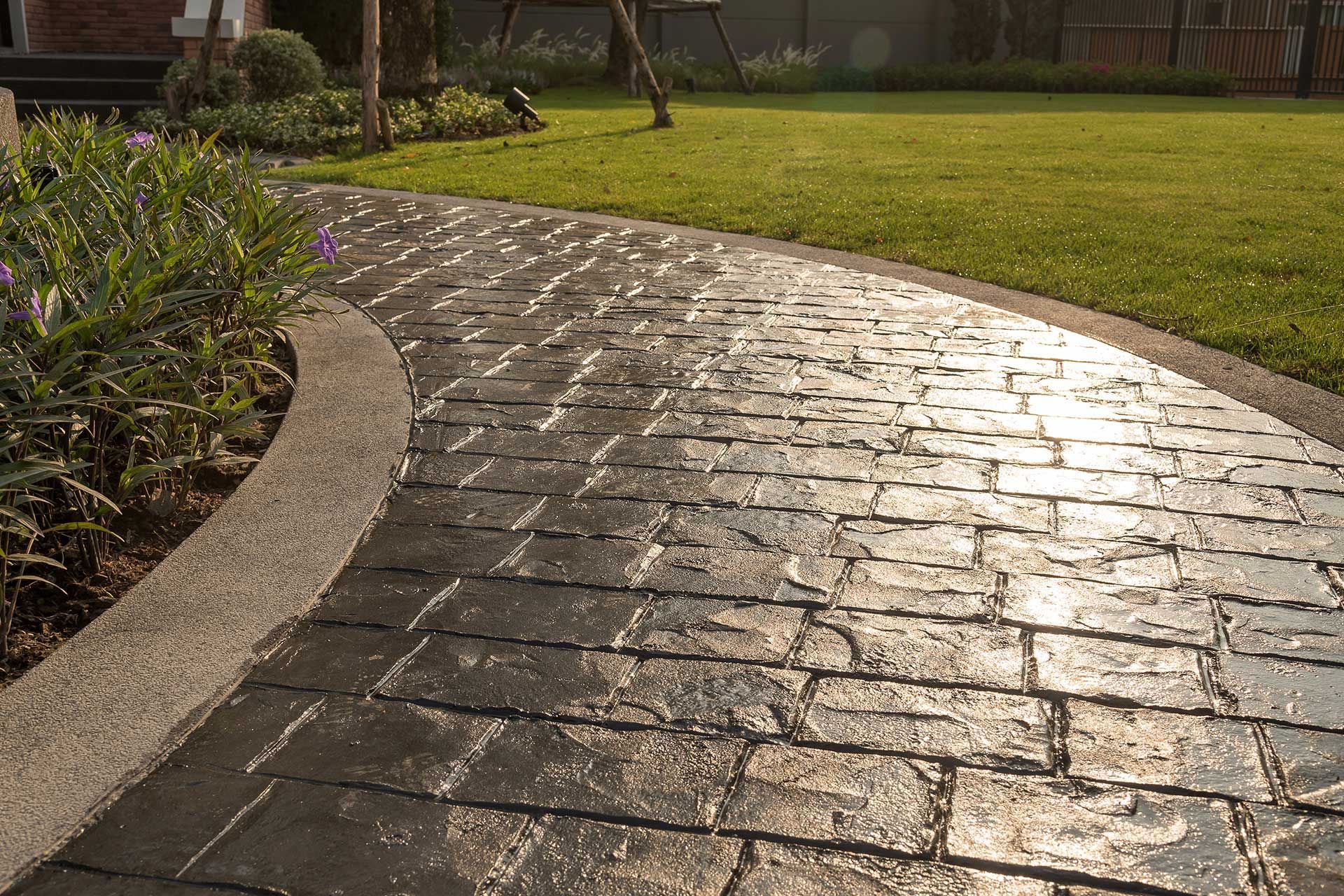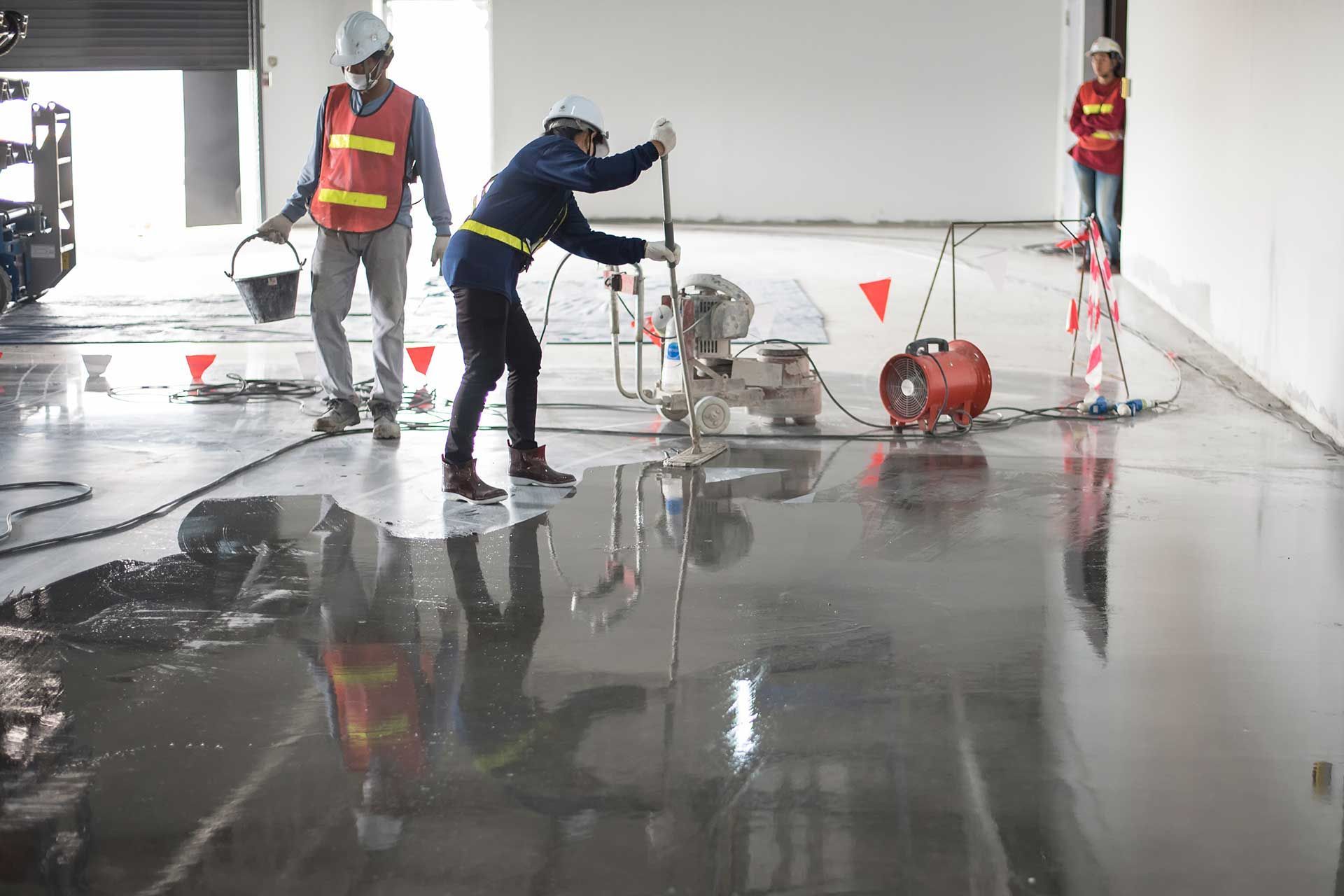How Long After Sealing Concrete Can You Walk On It Safely?
Applying a protective layer to concrete extends its lifespan and improves its appearance, but timing is important for foot traffic. Many ask, ”How long after sealing concrete can you walk on it without causing damage?”
The answer depends on the type of sealer, weather conditions, surface preparation, and more.
Different sealers have varying curing times, ranging from a few hours to several days, making it important to know the specific product being used. Temperature and humidity levels also influence drying speed, because cooler temperatures and high moisture can slow the process.
Whether through a grind and seal concrete method or another technique, the way the concrete was prepped affects adhesion and durability. Walking on a surface too soon compromises the longevity of the seal and can lead to unwanted imprints, dull spots, or reduced protection.
Proper timing not only prevents premature wear but also allows the surface to achieve full strength, so that it remains resistant to moisture, stains, and daily foot traffic.
How Long After Sealing Concrete Can You Walk On It: Drying Time
The time required before walking on sealed concrete varies based on the sealer type. Water-based sealers usually dry faster than solvent-based ones. A thin coat of a water-based product may allow foot traffic within four to six hours, while solvent-based options can require up to 24 hours.
Humidity, temperature, and ventilation also influence drying time. Higher humidity slows evaporation, extending the curing process, whereas warm temperatures and good airflow speed it up.
Differences Between Penetrating and Film-Forming Sealers
Not all sealers function the same way. Penetrating sealers absorb into the surface, forming a barrier within the concrete rather than on top. Since they don’t create a film, these sealers often allow light foot traffic within a few hours.
However, full protection develops over several days. Acrylic or polyurethane film-forming sealers form a visible coating that takes longer to cure. Walking on these too soon can leave marks, scuffs, or weaken the finish.
The Importance of Surface Preparation Before Sealing
Applying a sealer to an unclean surface leads to adhesion problems. Before sealing, concrete should be free of dust, grease, and moisture. A common preparation method involves pressure washing, followed by drying for at least 24 hours.
Grind and seal concrete surfaces require extra care, as grinding removes imperfections while opening pores for better adhesion. Proper preparation ensures an even application and maximizes longevity.
Recommended Waiting Periods for Different Traffic Levels
For basic foot traffic, most sealed surfaces are safe within 24 hours, though some high-performance coatings may need 48 hours. Heavier loads, such as furniture placement or vehicular use, require longer curing times.
In garage settings, waiting at least 72 hours before parking a vehicle prevents tire marks and damage. For commercial spaces, waiting a full week before resuming normal operations helps maintain the protective qualities of the sealant.
The Part Played by Temperature and Humidity in Curing Time
Concrete sealing projects should be scheduled when temperatures are between 50- and 85-degrees Fahrenheit. Cold weather slows drying times, while extreme heat may cause the sealer to evaporate too quickly, affecting its durability.
A moderate climate with steady air circulation allows for a uniform cure. High humidity can also trap moisture beneath the surface, leading to cloudy or tacky finishes that take longer to set properly.
Avoiding Common Mistakes That Delay Safe Walking Time
One of the biggest mistakes is applying thick layers, which extend drying time and increase the risk of an uneven finish. Multiple thin coats dry more efficiently and produce better results.
Another mistake is sealing concrete that hasn’t fully dried after cleaning or recent installation. Trapped moisture weakens adhesion and leads to bubbling or peeling.
Finally, failing to block off the area while the sealer dries invites premature foot traffic, which may create visible flaws.
How to Test If a Sealed Surface Is Ready for Walking
Rather than guessing, a simple touch test can help determine if the surface is ready. Lightly press a fingertip onto the sealed area. If it feels tacky or leaves an imprint, more time is needed.
Another method involves placing a dry paper towel on the surface and applying slight pressure. If it sticks, the sealer has not fully dried. For those using film-forming sealers, walking on the edge of a test area with clean, soft-soled shoes helps gauge readiness without affecting the main surface.
Differences Between Indoor and Outdoor Sealed Concrete
Indoor spaces tend to cure more predictably due to controlled environments, while outdoor surfaces face unpredictable weather conditions. Rain or excessive moisture shortly after sealing can compromise the finish, requiring a reapplication.
Additionally, wind-blown debris settling on a freshly sealed driveway or patio may create imperfections. Covering outdoor projects with breathable tarps helps protect the surface without trapping moisture underneath.
Choosing the Right Sealer for Faster Drying Times
Different projects require specific sealers based on durability needs and drying time. Acrylic sealers dry quickly and work well for decorative indoor surfaces. Polyurethane options take longer to cure but provide superior protection in high-traffic areas.
Epoxy-based sealers, often used in garages or industrial settings, demand a longer curing time but offer unmatched resistance to chemicals and abrasions. Selecting the right product helps guarantee a better sealing process with minimal downtime.
Maintenance Tips After Sealing
Once fully cured, sealed concrete requires routine maintenance to preserve its integrity. Regular sweeping and occasional mopping prevent dirt buildup that could degrade the finish over time. In high-use areas, resealing every two to three years maintains its protective properties.
When dealing with flooring options that include sealed concrete, using non-abrasive cleaners helps retain the surface’s appearance without compromising the sealer. For outdoor areas, reapplying a UV-resistant sealer extends longevity and prevents fading.
Walking on Sealed Concrete Too Soon: Potential Damage
Ignoring the recommended drying time leads to unwanted damage. Premature foot traffic may cause visible footprints, scuff marks, or indentations. More serious issues include weakening the protective layer, which reduces its resistance to stains, moisture, and wear.
In cases where a surface is compromised, light sanding followed by an additional coat may be needed to restore its original look and strength.
When to Reseal Concrete for Continued Protection
Over time, heavy foot traffic, weather exposure, and cleaning chemicals wear down the sealer.
A simple water test helps determine if resealing is necessary. Sprinkling a few drops of water onto the surface should result in beading. If the water absorbs quickly it shows that the sealer has worn off, and reapplication is recommended.
For areas experiencing frequent use, resealing every couple of years provides continued durability and aesthetic appeal.
Impact of Different Flooring Options on Walking Time After Sealing
Concrete flooring remains a popular choice, but its maintenance differs from other surfaces. Unlike hardwood or tile, sealed concrete requires specific curing periods before it can handle traffic.
Flooring options such as laminate or vinyl allow for immediate use after installation, whereas sealed concrete needs careful timing. This makes planning important when using concrete in high-traffic areas.
Professional Sealing vs. DIY: Which Yields Better Results?
Homeowners often seal concrete themselves, but a professional application guarantees even coverage and optimal drying conditions. Experts know how to select the right product for different environments and will control drying factors such as temperature and humidity.
For large areas or high-end finishes, professional sealing delivers a more uniform and long-lasting result. This is compared to DIY applications, where the floor may suffer from inconsistent drying times or improper techniques.
Timing Matters for Walking on Sealed Concrete
Knowing how long after sealing concrete you can walk on it prevents costly mistakes and maintains the integrity of the surface. Drying times depend on the sealer type, weather conditions, and application thickness.
Proper preparation and patience result in a durable, long-lasting finish. For those who make the choice of expert sealing services, consulting professionals guarantees the best outcome with minimal downtime.
Expert Concrete Sealing with Premier Polishing Corp
Premier Polishing Corp has high-quality concrete finishing solutions for both residential and commercial spaces. Whether you're looking for polished concrete, epoxy flooring, or a grind and seal finish, our team brings more than 75 years of combined experience to every project.
Our in-house civil engineers and professionally trained crews use industry-leading materials, techniques, and equipment to achieve the best results possible. We don’t just apply a sealer — we assess each surface carefully, preparing it with precision to guarantee longevity and durability.
From decorative overlays to functional underlays, we offer customized solutions that meet the highest standards.
Our expertise extends beyond sealing, covering a wide range of concrete applications. This includes countertops, firepits, vanities, shower pans, and outdoor landscape features. Whether you're upgrading a high-traffic commercial space or enhancing a home’s flooring, we handle every detail with professionalism and skill.
Choosing Premier Polishing Corp means getting superior results, minimal downtime, and exceptional customer service. If you have any questions about our services or would like a free estimate, contact us today.








